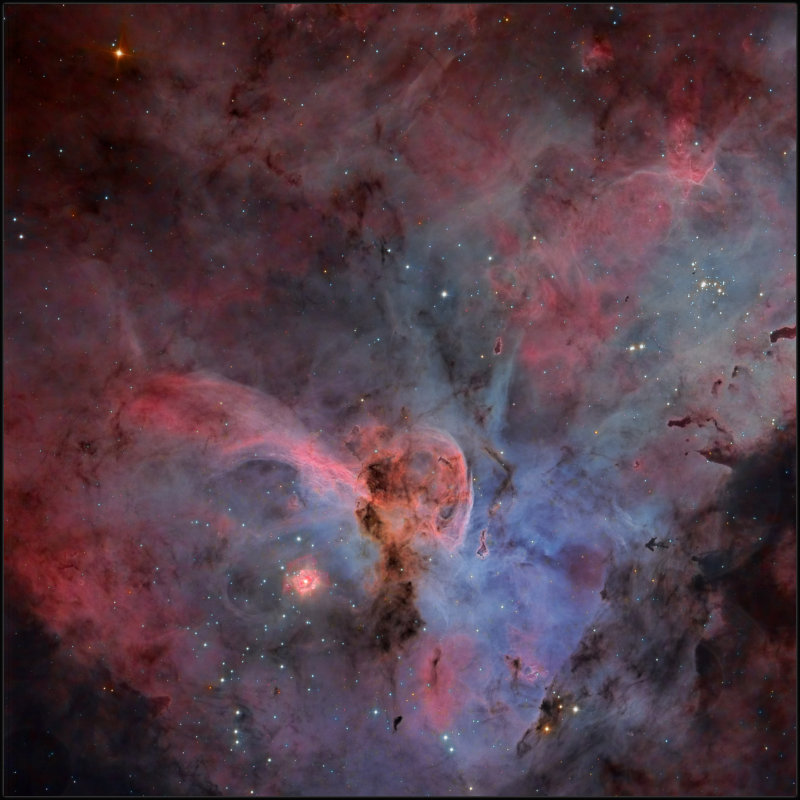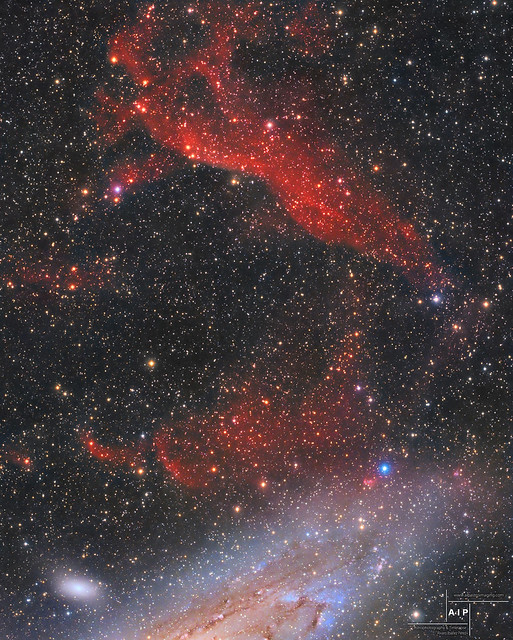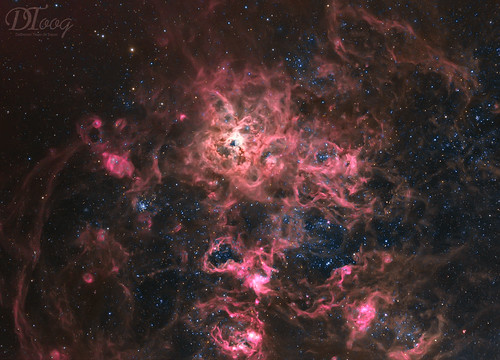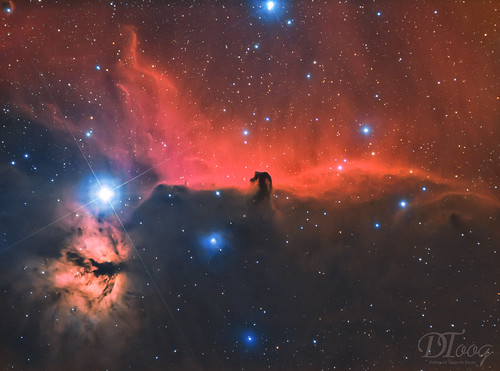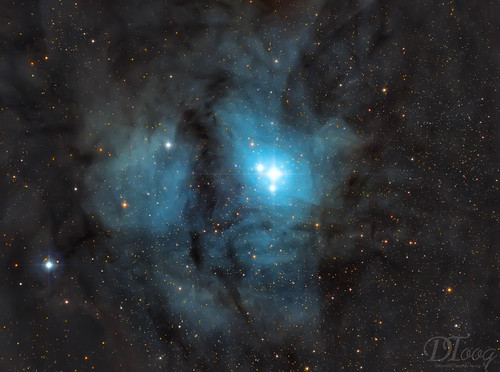Submission: 2019 January
Submission: 2019 January
__________________________________________________________________________________________________
Please post your images here.
Please see this thread before posting images; posting images demonstrates your agreement with
the possible uses for your image.
If hotlinking to an image, please ensure it is under 400K.
Hotlinks to images over 400K slow down the thread too much and will be disabled.
Thank you!
_________________________________________________________________________________________________
<- Previous submissions
Please post your images here.
Please see this thread before posting images; posting images demonstrates your agreement with
the possible uses for your image.
If hotlinking to an image, please ensure it is under 400K.
Hotlinks to images over 400K slow down the thread too much and will be disabled.
Thank you!
_________________________________________________________________________________________________
<- Previous submissions
Know the quiet place within your heart and touch the rainbow of possibility; be
alive to the gentle breeze of communication, and please stop being such a jerk. — Garrison Keillor
alive to the gentle breeze of communication, and please stop being such a jerk. — Garrison Keillor
-
markh@tds.net
- Science Officer
- Posts: 117
- Joined: Wed Oct 03, 2012 7:44 pm
Re: Submission: 2019 January
NGC 40-planetary nebula and CTA1-super nova remnant
Copyright: Mark Hanson
This was a really challenging image to process, the background super nova remnant is very faint and took allot to get it to stand out in the background of all those stars. This is the first frame of what is to be at least a 9 frame mosaic that may take a few years!
Here is a nice description by "Sakib Rasool"
"NGC 40 is a bright planetary nebula consisting of a detailed core with an outer halo. This halo consists of a double structure with a diffuse inner halo attached to the central shell and a more irregular filamentary structure, which extends to the north. In addition to these array of features is a structure to the south, which has been interpreted as a jet. Professional observations with the Spitzer infrared telescope have shown the inner halo to consist of multiple overlapping radial spoke ring structures. This halo was discovered in 1987.
The central star of this planetary nebula has been well studied by professional astronomers and is also interesting in its own right. It belongs to the Wolf Rayet subclass of planetary nebula central stars that are hydrogen deficient and exhibit high mass loss rates and strong stellar winds. WR type central stars have been identified in a number of other planetary nebulae including IC 4663 and Abell 48.
Extending along the contours of the full field of this image are multiple colorful filaments belonging to the large faint supernova remnant CTA 1, which covers an area of 1.5 degrees across the sky. Both NGC 40 and CTA 1 are physically unrelated with the supernova remnant lying more distant in the background. NGC 40 is 3500 light years away and CTA 1 is 4500 light years away."
Full Image can be found here: https://www.hansonastronomy.com/ngc-40cta1
Thank you,
Mark Hanson
Copyright: Mark Hanson
This was a really challenging image to process, the background super nova remnant is very faint and took allot to get it to stand out in the background of all those stars. This is the first frame of what is to be at least a 9 frame mosaic that may take a few years!
Here is a nice description by "Sakib Rasool"
"NGC 40 is a bright planetary nebula consisting of a detailed core with an outer halo. This halo consists of a double structure with a diffuse inner halo attached to the central shell and a more irregular filamentary structure, which extends to the north. In addition to these array of features is a structure to the south, which has been interpreted as a jet. Professional observations with the Spitzer infrared telescope have shown the inner halo to consist of multiple overlapping radial spoke ring structures. This halo was discovered in 1987.
The central star of this planetary nebula has been well studied by professional astronomers and is also interesting in its own right. It belongs to the Wolf Rayet subclass of planetary nebula central stars that are hydrogen deficient and exhibit high mass loss rates and strong stellar winds. WR type central stars have been identified in a number of other planetary nebulae including IC 4663 and Abell 48.
Extending along the contours of the full field of this image are multiple colorful filaments belonging to the large faint supernova remnant CTA 1, which covers an area of 1.5 degrees across the sky. Both NGC 40 and CTA 1 are physically unrelated with the supernova remnant lying more distant in the background. NGC 40 is 3500 light years away and CTA 1 is 4500 light years away."
Full Image can be found here: https://www.hansonastronomy.com/ngc-40cta1
Thank you,
Mark Hanson
Re: Submission: 2019 January
Hi,
Here is a sight not seen usually:
The Homunculus Nebula in Carina
Please see the full resolution image here:
http://www.pbase.com/tango33/image/168598845/original
And the full frame:
http://www.pbase.com/tango33/image/168600127/original
Happy new year!
Kfir Simon
Here is a sight not seen usually:
The Homunculus Nebula in Carina
Please see the full resolution image here:
http://www.pbase.com/tango33/image/168598845/original
And the full frame:
http://www.pbase.com/tango33/image/168600127/original
Happy new year!
Kfir Simon
-
Alson Wong
- Ensign
- Posts: 85
- Joined: Tue Sep 06, 2011 4:14 am
- Contact:
Re: Submission: 2019 January
That's a fascinating image and a startling (apparent) conjunction: A planetary nebula seemingly (but not really) "inside" a supernova remnant!markh@tds.net wrote: ↑Tue Jan 01, 2019 11:19 pm NGC 40-planetary nebula and CTA1-super nova remnant
Copyright: Mark Hanson
NGC40-P1Websmallapod.jpg
This was a really challenging image to process, the background super nova remnant is very faint and took allot to get it to stand out in the background of all those stars. This is the first frame of what is to be at least a 9 frame mosaic that may take a few years!
Here is a nice description by "Sakib Rasool"
"NGC 40 is a bright planetary nebula consisting of a detailed core with an outer halo. This halo consists of a double structure with a diffuse inner halo attached to the central shell and a more irregular filamentary structure, which extends to the north. In addition to these array of features is a structure to the south, which has been interpreted as a jet. Professional observations with the Spitzer infrared telescope have shown the inner halo to consist of multiple overlapping radial spoke ring structures. This halo was discovered in 1987.
The central star of this planetary nebula has been well studied by professional astronomers and is also interesting in its own right. It belongs to the Wolf Rayet subclass of planetary nebula central stars that are hydrogen deficient and exhibit high mass loss rates and strong stellar winds. WR type central stars have been identified in a number of other planetary nebulae including IC 4663 and Abell 48.
Extending along the contours of the full field of this image are multiple colorful filaments belonging to the large faint supernova remnant CTA 1, which covers an area of 1.5 degrees across the sky. Both NGC 40 and CTA 1 are physically unrelated with the supernova remnant lying more distant in the background. NGC 40 is 3500 light years away and CTA 1 is 4500 light years away."
Full Image can be found here: https://www.hansonastronomy.com/ngc-40cta1
Thank you,
Mark Hanson
I admire your own dedication and hard work as much as I admire the beautiful and intricate image.
Ann
Color Commentator
Re: Submission: 2019 January
That is very well done!tango33 wrote: ↑Wed Jan 02, 2019 1:41 am Hi,
Here is a sight not seen usually:
The Homunculus Nebula in Carina
Please see the full resolution image here:
http://www.pbase.com/tango33/image/168598845/original
And the full frame:
http://www.pbase.com/tango33/image/168600127/original
Happy new year!
Kfir Simon
I'm impressed that you as an amateur have captured all the important denizens of the Carina Nebula: Eta Carina and the Homunculus nebula, the Keyhole nebula, the "Loch Ness area" (with all the dust beasties at right in the full fram image) and open cluster Trumpler 14, including its weird, very black dust bunny. I believe that "Bok globule" is the technical name for that feature.
Ann
Color Commentator
-
kokehtz
- Ensign
- Posts: 50
- Joined: Sun Mar 17, 2013 11:49 pm
- AKA: AIP
- Location: Madrid, Spain
- Contact:
Re: Submission: 2019 January
Andromeda Clouds
Website: www.aipastroimaging.com
Copyright: Álvaro Ibáñez Pérez
More information and photos in my section of the website:
https://aipastroimaging.com/m31-ha-clouds-hargb/
Full resolution:
https://aipastroimaging.com/wp-content/ ... al_AIP.jpg
Website: www.aipastroimaging.com
Copyright: Álvaro Ibáñez Pérez
More information and photos in my section of the website:
https://aipastroimaging.com/m31-ha-clouds-hargb/
Full resolution:
https://aipastroimaging.com/wp-content/ ... al_AIP.jpg
Telescope: Takahashi FSQ106EDX f/3,6-f/5
Mounts: Takahashi EM400 Temma-2, NEQ6 Pro II Tuning Belts
Camera: Atik 16200 monochrome
Filter Wheel: SX USB Filter Wheel 5x50,8mm
Filters: Astrodon Gen2 LRGB I-Series Tru-Balance 50,8mm
Guider: Lunático EZG-60 + SXLodestar
www.aipastroimaging.com
Mounts: Takahashi EM400 Temma-2, NEQ6 Pro II Tuning Belts
Camera: Atik 16200 monochrome
Filter Wheel: SX USB Filter Wheel 5x50,8mm
Filters: Astrodon Gen2 LRGB I-Series Tru-Balance 50,8mm
Guider: Lunático EZG-60 + SXLodestar
www.aipastroimaging.com
-
markh@tds.net
- Science Officer
- Posts: 117
- Joined: Wed Oct 03, 2012 7:44 pm
Re: Submission: 2019 January
Ann, Thank you so much for the nice comment! Much appreciated
Ann wrote: ↑Wed Jan 02, 2019 7:24 amThat's a fascinating image and a startling (apparent) conjunction: A planetary nebula seemingly (but not really) "inside" a supernova remnant!markh@tds.net wrote: ↑Tue Jan 01, 2019 11:19 pm NGC 40-planetary nebula and CTA1-super nova remnant
Copyright: Mark Hanson
NGC40-P1Websmallapod.jpg
This was a really challenging image to process, the background super nova remnant is very faint and took allot to get it to stand out in the background of all those stars. This is the first frame of what is to be at least a 9 frame mosaic that may take a few years!
Here is a nice description by "Sakib Rasool"
"NGC 40 is a bright planetary nebula consisting of a detailed core with an outer halo. This halo consists of a double structure with a diffuse inner halo attached to the central shell and a more irregular filamentary structure, which extends to the north. In addition to these array of features is a structure to the south, which has been interpreted as a jet. Professional observations with the Spitzer infrared telescope have shown the inner halo to consist of multiple overlapping radial spoke ring structures. This halo was discovered in 1987.
The central star of this planetary nebula has been well studied by professional astronomers and is also interesting in its own right. It belongs to the Wolf Rayet subclass of planetary nebula central stars that are hydrogen deficient and exhibit high mass loss rates and strong stellar winds. WR type central stars have been identified in a number of other planetary nebulae including IC 4663 and Abell 48.
Extending along the contours of the full field of this image are multiple colorful filaments belonging to the large faint supernova remnant CTA 1, which covers an area of 1.5 degrees across the sky. Both NGC 40 and CTA 1 are physically unrelated with the supernova remnant lying more distant in the background. NGC 40 is 3500 light years away and CTA 1 is 4500 light years away."
Full Image can be found here: https://www.hansonastronomy.com/ngc-40cta1
Thank you,
Mark Hanson
I admire your own dedication and hard work as much as I admire the beautiful and intricate image.
Ann
-
starsurfer
- Stellar Cartographer
- Posts: 5409
- Joined: Thu Mar 15, 2012 7:25 pm
Re: Submission: 2019 January
There's actually a number of obscure planetary nebulae in the vicinity of supernova remnants, here's two I can think of:Ann wrote: ↑Wed Jan 02, 2019 7:24 amThat's a fascinating image and a startling (apparent) conjunction: A planetary nebula seemingly (but not really) "inside" a supernova remnant!markh@tds.net wrote: ↑Tue Jan 01, 2019 11:19 pm NGC 40-planetary nebula and CTA1-super nova remnant
Copyright: Mark Hanson
NGC40-P1Websmallapod.jpg
This was a really challenging image to process, the background super nova remnant is very faint and took allot to get it to stand out in the background of all those stars. This is the first frame of what is to be at least a 9 frame mosaic that may take a few years!
Here is a nice description by "Sakib Rasool"
"NGC 40 is a bright planetary nebula consisting of a detailed core with an outer halo. This halo consists of a double structure with a diffuse inner halo attached to the central shell and a more irregular filamentary structure, which extends to the north. In addition to these array of features is a structure to the south, which has been interpreted as a jet. Professional observations with the Spitzer infrared telescope have shown the inner halo to consist of multiple overlapping radial spoke ring structures. This halo was discovered in 1987.
The central star of this planetary nebula has been well studied by professional astronomers and is also interesting in its own right. It belongs to the Wolf Rayet subclass of planetary nebula central stars that are hydrogen deficient and exhibit high mass loss rates and strong stellar winds. WR type central stars have been identified in a number of other planetary nebulae including IC 4663 and Abell 48.
Extending along the contours of the full field of this image are multiple colorful filaments belonging to the large faint supernova remnant CTA 1, which covers an area of 1.5 degrees across the sky. Both NGC 40 and CTA 1 are physically unrelated with the supernova remnant lying more distant in the background. NGC 40 is 3500 light years away and CTA 1 is 4500 light years away."
Full Image can be found here: https://www.hansonastronomy.com/ngc-40cta1
Thank you,
Mark Hanson
I admire your own dedication and hard work as much as I admire the beautiful and intricate image.
Ann
DeGaPe 1 near the Vela Supernova Remnant
Patchick 27 near the Veil Nebula
-
starsurfer
- Stellar Cartographer
- Posts: 5409
- Joined: Thu Mar 15, 2012 7:25 pm
Re: Submission: 2019 January
This needs to be a mosaic!!kokehtz wrote: ↑Wed Jan 02, 2019 9:23 am Andromeda Clouds
Website: www.aipastroimaging.com
Copyright: Álvaro Ibáñez Pérez
More information and photos in my section of the website:
https://aipastroimaging.com/m31-ha-clouds-hargb/
Full resolution:
https://aipastroimaging.com/wp-content/ ... al_AIP.jpg
Re: Submission: 2019 January
While unsuccesfully chasing 46P I took a snapshot of Orion...
-
kokehtz
- Ensign
- Posts: 50
- Joined: Sun Mar 17, 2013 11:49 pm
- AKA: AIP
- Location: Madrid, Spain
- Contact:
Re: Submission: 2019 January
Hi!
This year impossible... I need another 23 hours more exposure
clear skies
Telescope: Takahashi FSQ106EDX f/3,6-f/5
Mounts: Takahashi EM400 Temma-2, NEQ6 Pro II Tuning Belts
Camera: Atik 16200 monochrome
Filter Wheel: SX USB Filter Wheel 5x50,8mm
Filters: Astrodon Gen2 LRGB I-Series Tru-Balance 50,8mm
Guider: Lunático EZG-60 + SXLodestar
www.aipastroimaging.com
Mounts: Takahashi EM400 Temma-2, NEQ6 Pro II Tuning Belts
Camera: Atik 16200 monochrome
Filter Wheel: SX USB Filter Wheel 5x50,8mm
Filters: Astrodon Gen2 LRGB I-Series Tru-Balance 50,8mm
Guider: Lunático EZG-60 + SXLodestar
www.aipastroimaging.com
-
Colorado CJ
- Asternaut
- Posts: 1
- Joined: Thu Jan 03, 2019 4:46 pm
Re: Submission: 2019 January
Hello, I would like to submit my newest astro photo to APOD discussion group.
I took this New Year's Day on a chilly 3 degree evening in my backyard in Loveland, Colorado. We don't have very dark skies here, around Bortle 7, but with proper post processing I am able to get some decent images.
I am a long time photographer, but I am pretty new to astrophotography. This is around the 20th or so astro photo I've ever taken. I am completely hooked!
This image was taken using a Nikon D600 DSLR (unmodified). It is a stack of 38 subs at 300 seconds each and 400 ISO. This is the first time I've shot Andromeda since getting a guide setup for my mount on Christmas.
The following equipment was used for this photo:
Stellarvue SV80 Access
SFF3-25-48 Field Flattener
EQ6-R Pro Mount
Nikon D600 (unmodified)
ZWO ASI120MC-S Guide Camera
Astromania 60mm Guide Scope
Thank you for letting me submit this photo. It's the best one I've taken of Andromeda.
Here's the full size image: https://www.dropbox.com/s/3wj1kjpst5gm1 ... l.jpg?dl=0
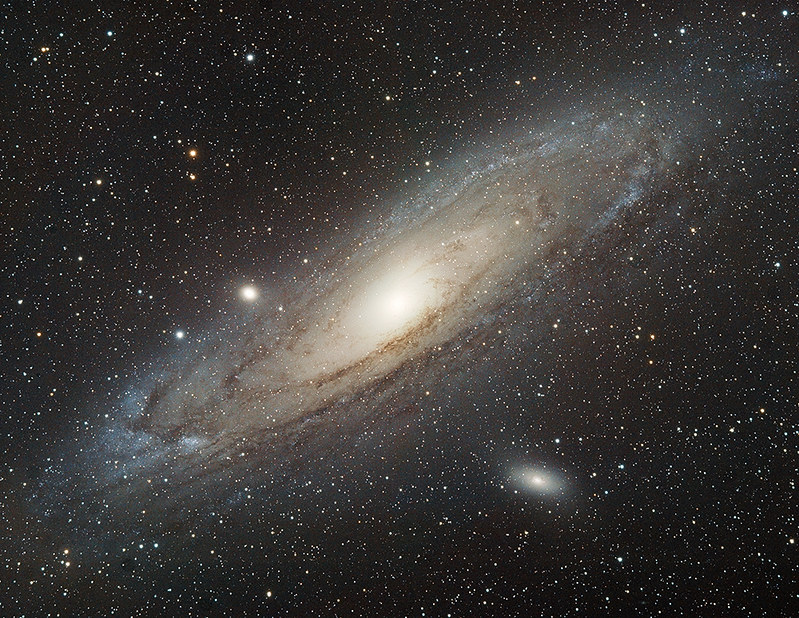 Andromeda Galaxy - New Years Day by Andrew Marjama, on Flickr
Andromeda Galaxy - New Years Day by Andrew Marjama, on Flickr
I took this New Year's Day on a chilly 3 degree evening in my backyard in Loveland, Colorado. We don't have very dark skies here, around Bortle 7, but with proper post processing I am able to get some decent images.
I am a long time photographer, but I am pretty new to astrophotography. This is around the 20th or so astro photo I've ever taken. I am completely hooked!
This image was taken using a Nikon D600 DSLR (unmodified). It is a stack of 38 subs at 300 seconds each and 400 ISO. This is the first time I've shot Andromeda since getting a guide setup for my mount on Christmas.
The following equipment was used for this photo:
Stellarvue SV80 Access
SFF3-25-48 Field Flattener
EQ6-R Pro Mount
Nikon D600 (unmodified)
ZWO ASI120MC-S Guide Camera
Astromania 60mm Guide Scope
Thank you for letting me submit this photo. It's the best one I've taken of Andromeda.
Here's the full size image: https://www.dropbox.com/s/3wj1kjpst5gm1 ... l.jpg?dl=0
 Andromeda Galaxy - New Years Day by Andrew Marjama, on Flickr
Andromeda Galaxy - New Years Day by Andrew Marjama, on FlickrRe: Submission: 2019 January
IC 342 / Hidden Galaxy
Copyright Christopher Sullivan
Full resolution available here: https://www.astrobin.com/full/375415/I/
Full resolution available here: https://www.astrobin.com/full/375415/I/
Re: Submission: 2019 January
IC 444 & IC 443 (Jellyfish Nebula)
Full info @: http://www.kinchastro.com/jellyfish-nebula.html
Full info @: http://www.kinchastro.com/jellyfish-nebula.html
-
KuriousGeorge
- Science Officer
- Posts: 218
- Joined: Wed Dec 30, 2015 7:07 am
- Location: San Diego, CA
- Contact:
Re: Submission: 2019 January
Sombrero Galaxy. KG Observatory, Julian CA.
While waiting for clearer skies, I decided to reprocess my Sombrero Galaxy image from last April. Here I use the relatively new PI PhotometricColorCalibration and a more detailed use of HDRMultiscaleTransform. As a result, colors should be more accurate and more detail is revealed near the core.
Imaging telescope or lens:Planewave CDK24
Imaging camera:FLI Proline 16803
Mount:Planewave L600
Guiding camera:Starlight Xpress Ultrastar
Software:PixInsight 1.8, Planewave PWI4, Planewave PWI3, Maxim DL6, PHD Guiding 2, Neat Image V7, Photoshop CS3, Sequence Generator Pro
Filters:Astrodon 50mm B, Astrodon 50mm R, Astrodon 50 mm G, Astrodon 50mm L
Accessories:FLI CFW-5-7, Astrodon Monster MOAG, Hedrick Focuser, Planewave Delta-T, Planewave EFA
Resolution: 1411x976
Dates:April 14, 2018
Frames:
Astrodon 50 mm G: 12x300" -20C bin 1x1
Astrodon 50mm B: 7x300" -20C bin 1x1
Astrodon 50mm L: 35x300" -20C bin 1x1
Astrodon 50mm R: 12x300" -20C bin 1x1
Integration: 5.5 hours
Darks: ~20
Flats: ~80
Flat darks: ~80
Bias: ~20
Avg. Moon age: 27.91 days
Avg. Moon phase: 2.96%
Mean SQM: 21.40
Astrometry.net job: 2446158
RA center: 189.997 degrees
DEC center: -11.624 degrees
Pixel scale: 0.468 arcsec/pixel
Orientation: 0.534 degrees
Field radius: 0.112 degrees
Locations: KG Observatory, Julian, CA, United States
Data source: Backyard
While waiting for clearer skies, I decided to reprocess my Sombrero Galaxy image from last April. Here I use the relatively new PI PhotometricColorCalibration and a more detailed use of HDRMultiscaleTransform. As a result, colors should be more accurate and more detail is revealed near the core.
Imaging telescope or lens:Planewave CDK24
Imaging camera:FLI Proline 16803
Mount:Planewave L600
Guiding camera:Starlight Xpress Ultrastar
Software:PixInsight 1.8, Planewave PWI4, Planewave PWI3, Maxim DL6, PHD Guiding 2, Neat Image V7, Photoshop CS3, Sequence Generator Pro
Filters:Astrodon 50mm B, Astrodon 50mm R, Astrodon 50 mm G, Astrodon 50mm L
Accessories:FLI CFW-5-7, Astrodon Monster MOAG, Hedrick Focuser, Planewave Delta-T, Planewave EFA
Resolution: 1411x976
Dates:April 14, 2018
Frames:
Astrodon 50 mm G: 12x300" -20C bin 1x1
Astrodon 50mm B: 7x300" -20C bin 1x1
Astrodon 50mm L: 35x300" -20C bin 1x1
Astrodon 50mm R: 12x300" -20C bin 1x1
Integration: 5.5 hours
Darks: ~20
Flats: ~80
Flat darks: ~80
Bias: ~20
Avg. Moon age: 27.91 days
Avg. Moon phase: 2.96%
Mean SQM: 21.40
Astrometry.net job: 2446158
RA center: 189.997 degrees
DEC center: -11.624 degrees
Pixel scale: 0.468 arcsec/pixel
Orientation: 0.534 degrees
Field radius: 0.112 degrees
Locations: KG Observatory, Julian, CA, United States
Data source: Backyard
-
starsurfer
- Stellar Cartographer
- Posts: 5409
- Joined: Thu Mar 15, 2012 7:25 pm
Re: Submission: 2019 January
- felopaul
- Ensign
- Posts: 97
- Joined: Mon Apr 29, 2013 7:14 pm
- AKA: Felopaul
- Location: Flagey (France)
- Contact:
Re: Submission: 2019 January
IC 434
RGBSHO : full size : http://www.cielboreal.com/galerie/photo93f.jpg
done with CDK20, Moravian G4-16000 on Paramount ME2 near Actacama Desert in Chile, El Sauce Observatory
http://www.cielaustral.com
Copyright: Team CielAustral with J.C CANONNE, N.OUTTERS, P. BERNHARD, D. CHAPLAIN & L. BOURGON
RGBSHO : full size : http://www.cielboreal.com/galerie/photo93f.jpg
done with CDK20, Moravian G4-16000 on Paramount ME2 near Actacama Desert in Chile, El Sauce Observatory
http://www.cielaustral.com
Copyright: Team CielAustral with J.C CANONNE, N.OUTTERS, P. BERNHARD, D. CHAPLAIN & L. BOURGON
-
Efrain Morales
- Commander
- Posts: 508
- Joined: Fri Oct 22, 2010 8:15 pm
- AKA: Jaicoa
- Location: Aguadilla, Puerto Rico
- Contact:
Comet Wirtanen - Jan.5th
Christmas Comet 46P/Wirtanen and Three distant Galaxies on the eve of Three Kings Day on January 5th, 04:37ut. (LX200ACF 12 in. OTA, CGE Mount, ST2000me Ccd, AO8, CFW9, Astronomik LRGB filter set.)
Tarantula nebula
Hello,
A recent picture made with ASA 500 Chilescope.
5 hours of SHO
The full is here: https://www.astrobin.com/full/384389/C/?nc=user https://cdn.astrobin.com/thumbs/yGDjG_m ... hqkGbg.jpg
A recent picture made with ASA 500 Chilescope.
5 hours of SHO
The full is here: https://www.astrobin.com/full/384389/C/?nc=user https://cdn.astrobin.com/thumbs/yGDjG_m ... hqkGbg.jpg
Last edited by bystander on Sun Jan 06, 2019 3:25 pm, edited 1 time in total.
Reason: Please no hotlinks to images > 500Kb. Substituted smaller image.
Reason: Please no hotlinks to images > 500Kb. Substituted smaller image.
-
Jean-Baptiste Auroux
- Ensign
- Posts: 78
- Joined: Tue Nov 14, 2017 10:06 pm
Re: Submission: 2019 January
M16 - Eagle Nebula SHO
Full version : https://cdn.astrobin.com/thumbs/clN_p_L ... hqkGbg.jpg
Setup : TSA102 - CCD AtikOne6 - Astronomik Filters 6nm
Ha : 30 x 600s bin1
OIII : 18 x 300s bin2
SII : 18 x 300s bin2
Total integration : 8h
Copyright: Jean-Baptiste Auroux - https://www.astrobin.com/users/Jean-Baptiste_Paris/
Full version : https://cdn.astrobin.com/thumbs/clN_p_L ... hqkGbg.jpg
Setup : TSA102 - CCD AtikOne6 - Astronomik Filters 6nm
Ha : 30 x 600s bin1
OIII : 18 x 300s bin2
SII : 18 x 300s bin2
Total integration : 8h
Copyright: Jean-Baptiste Auroux - https://www.astrobin.com/users/Jean-Baptiste_Paris/

